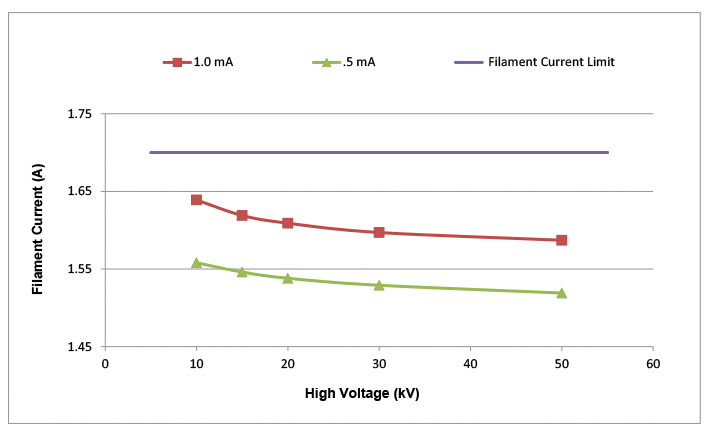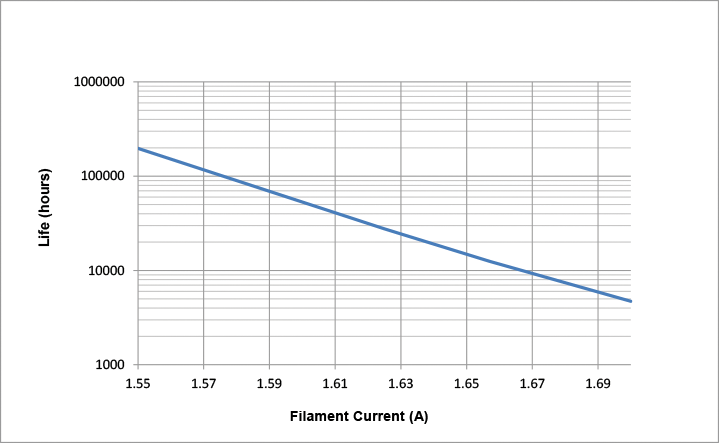应用
The process of producing electrons necessary for the production of X-rays in an X-ray tube begins by heating a tungsten wire. When heated to approximately 2000 degrees Celsius, tungsten is a copious emitter of electrons.
From this point several trade-offs in design become factors, which must be considered. The resulting design of a modern X-ray tube seeks to balance the relationship between performance and filament longevity.
Of importance to those users seeking a small X-ray focal spot, the relationship between a smaller wire filament and a small focal spot is well established. (This applies only to small focal spots when utilizing a tungsten wire filament. In the case of microfocus X-ray tubes, a dispenser cathode is typically employed.)
Since a smaller filament is preferred where possible, a typical filament “driver” circuit must be able to control the current to the filament quite carefully. This is due to the important relationship between filament current and actual temperature of the filament wire itself.
By example, the Jupiter Series 5000 X-ray tube requires more than 1.5 Amps current at 2 Volts to achieve the required filament temperature necessary for electron emission. However above 1.7 amps the filament enters a very high region of evaporation, and by 1.75 amps the filament reaches its melting point. Therefore careful control of the filament circuit is essential to a long lived X-ray tube. Our Shasta X-ray tube power supply has a tightly designed circuit which prevents the filament from exceeding its maximum allowable current. The Shasta power supply is perfectly matched to our X-ray tubes.
The process of heating the helical tungsten filament to produce electrons naturally causes the filament to evaporate. After a certain number of hours of normal operation, the filament will thin to the point of failure. The rate of filament evaporation, and thus the total number of hours required to thin the filament to the point of failure is a function of the chosen operating conditions.
The filament current required to heat and achieve a given X-ray beam current differs depending upon the required applied high voltage, as shown in Figure 1. To determine the anticipated life of a helical tungsten filament, one must estimate the average filament current employed throughout its life. Once estimated, the rate of evaporation can be used to estimate the normal filament life as shown in Figure 2. For example, if the user normally operates the X-ray tube at 40kV and 1.0 mA, this requires a filament current of approximately 1.60 A. Using the chart in Figure 2, this translates to approximately 40,000 hours of expected life.
A stand by condition of ~50% maximum filament current rating places the filament in a very low region of evaporation where the filament life is not measurably affected. You do not need to use a stand by condition to ensure maximum filament life, but you may find it beneficial as your power supply will achieve a steady state sooner.


 公安机关备案号31010402003473
公安机关备案号31010402003473